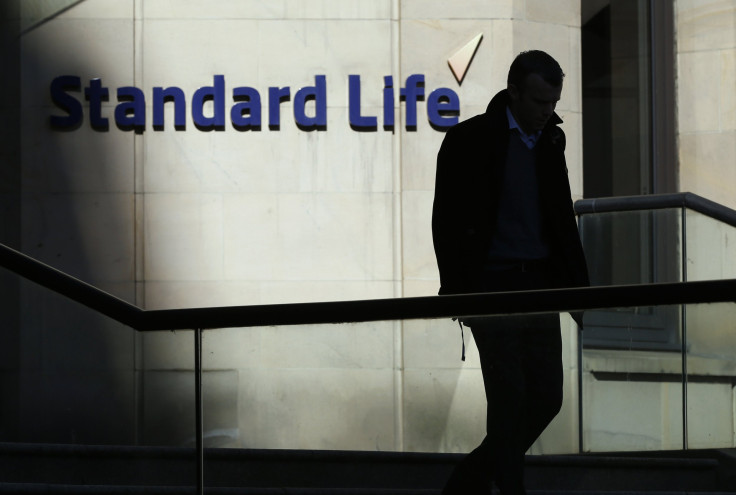Manulife Buys Standard Life's Canadian Assets For $3.7B

(Reuters) - Manulife Financial Corp and Britain's Standard Life have agreed a near-$4 billion deal for the Canadian operations of the British insurer as part of a broader global tie-up.
The C$4 billion cash deal will significantly expand Manulife's presence in Quebec and make Standard Life's earnings less volatile while helping it to continue to grow its asset management arm, analysts said.
Manulife said the transaction would boost earnings after the first year and more than double its presence in the largely French-speaking Canadian province, while Standard Life said it will return more than half of the sale proceeds to shareholders.
The companies will also expand an existing wealth and asset management partnership, with Manulife distributing Standard Life funds in Canada, the United States and Asia, while Standard Life reciprocates in the British retail market.
"I think this is a good deal for Manulife," Morningstar analyst Vincent Lui said, noting that Standard Life is a pioneer in areas such as liability-driven investments and that Manulife can benefit from the know-how gained via the acquisition.
Lui also said that the access and growth opportunities in Quebec are a huge bonus.
"Quebec is a market that has been to an extent ignored by a lot of the large Canadian insurers, so this deal gives Manulife a quick strategic entry point into that market," he said.
IMPROVED RISK-PROFILE
Analysts were even more positive on the benefits for Standard Life, describing the deal as "excellent" and "fabulous" in notes to clients.
Panmure Gordon's Barrie Cornes hailed what would be an improved risk profile of the company, saying: "Given the Canadian business includes a capital-intensive book of legacy spread/risk business, the disposal will substantially reduce Standard Life's overall capital requirements, volatility and exposure to market risk."
Shore Capital analyst Eamonn Flanagan said the disposal removes significant exposure to spread-and-guarantee risk but kept a "hold" rating on the stock, preferring Prudential and Legal & General for their purer exposure to insurance.
The contribution of Standard Life Investments', the insurer's fund arm, to Standard Life's fee-based revenue surged to 40 percent in the first half of the year from 29 percent five years ago, a Reuters analysis of half-yearly results showed.
"However, full marks to Standard Life for this move," Flanagan said.
Standard Life currently trades on a forward price-earnings ratio of 14.26, making it the most expensive of the leading UK insurers, though its return on equity is below average, Thomson Reuters data showed.
The money Standard Life plans to return to shareholders will be paid through a dividend that allows certain investors to report it as either income or capital, it said. A total payout of 1.75 billion pounds would equate to 73 pence per share.
Chief Executive David Nish declined to say what the company would do with the rest of the cash, but the company said it intends to carry out a share consolidation after the payout.
SHARES JUMP
Early trading on Thursday indicated that investors applauded the deal. While shares in Manulife, already Canada's largest insurer, closed 0.8 percent higher overnight in a Toronto index up 0.3 percent, Standard Life stock jumped by 10 percent at the open in a flat FTSE 100.
That put the stock on course for its biggest daily gain in more than five years, in volume more than half its 90-day daily average after only 30 minutes of trade. By 0926 GMT, the shares were still up by nearly 8 percent at 416.7 pence.
Manulife CEO Donald Guloien predicted that it would take one to two years to integrate the Standard Life assets.
"We think it is a great match with our organisation for a whole variety of reasons ... They've developed some very creative products that are a terrific complement to ours," he told reporters on a conference call.
Manulife said the deal significantly builds its capacity to offer services including group benefits and retirement, several areas of asset management, plus liability-driven investing.
Standard Life's Nish, meanwhile, said that his company would now be able to realise the full value of a business that has been turned around in recent years and expand collaboration on distribution. This could triple the $6 billion of assets under management already gained through a similar distribution deal with Manulife's John Hancock business, Nish said.
MANULIFE DIVIDEND SECURE
After the first year, Manulife said it expects the transaction, excluding integration costs, to add about 3 Canadian cents a share in value over each of the following three years.
"It will also increase our earnings capacity beyond our 2016 core earnings objective of C$4 billion," Guloien said. "This transaction, and the financing, maintain our strong capital position and in no way inhibit our ability to pay dividends. In fact, it will enhance our ability to increase dividends."
The insurer said the purchase will be partly funded by the sale of about C$2.1 billion of subscription receipts by way of a C$1.6 billion public-bought deal and a C$500 million placement with the Caisse de dépôt et placement du Québec pension fund. The balance will be paid for from internal funds and possible future sale of debt and equity.
© Copyright IBTimes 2025. All rights reserved.





















